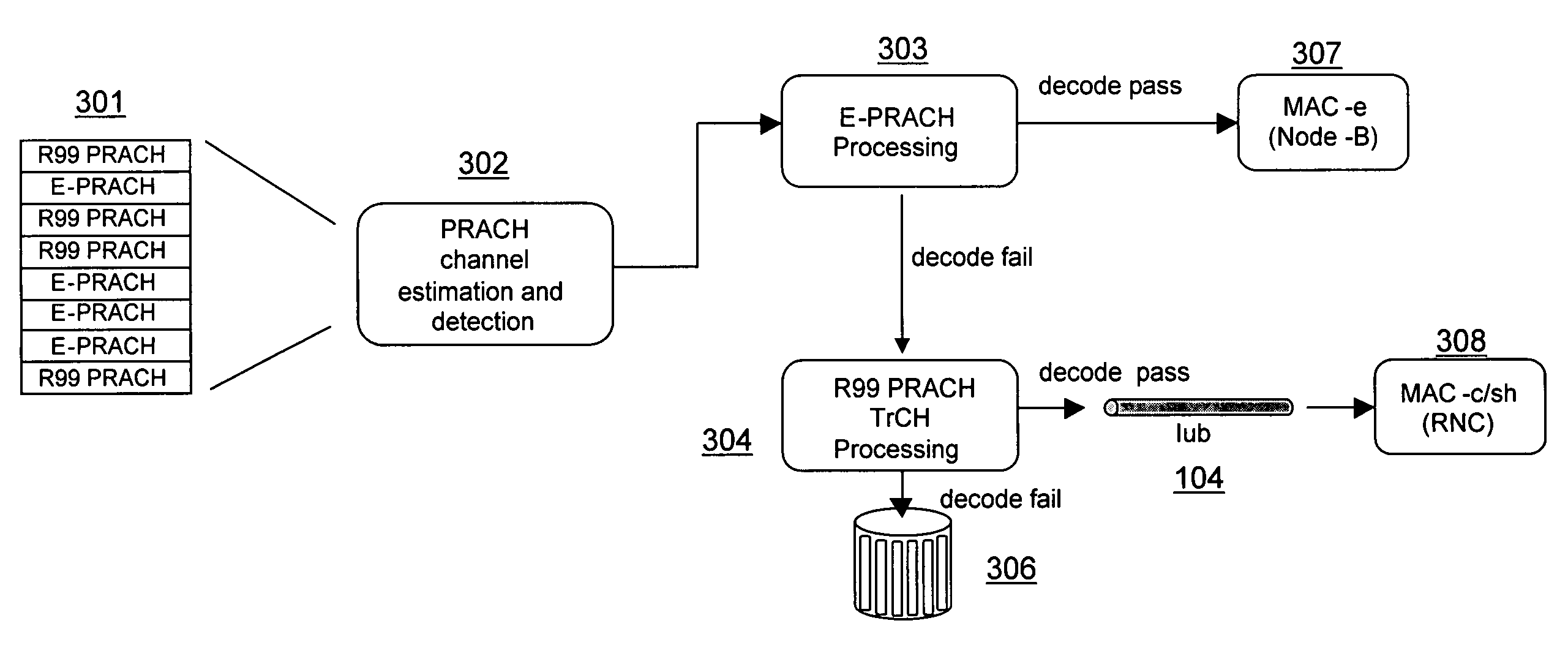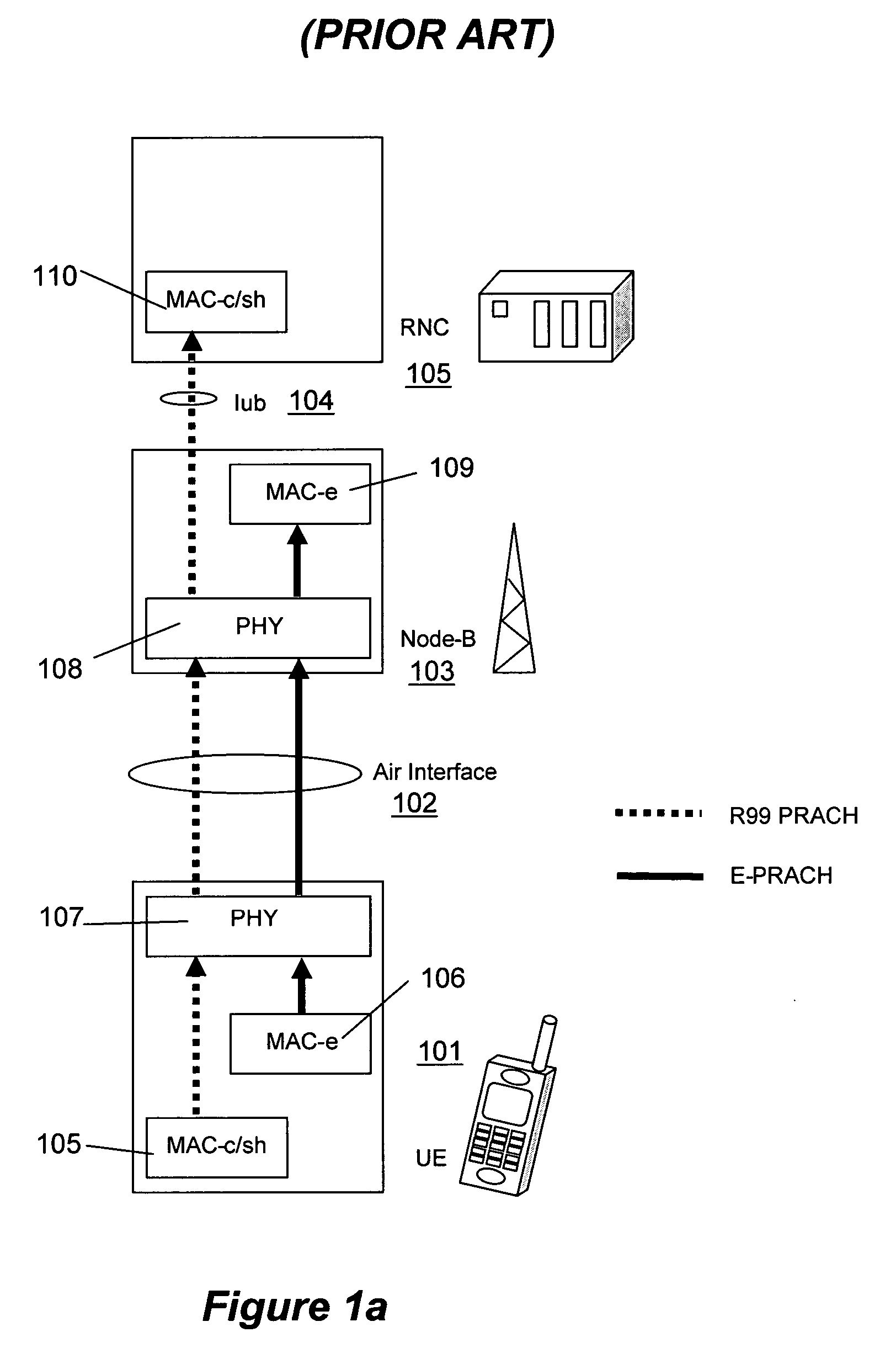Data packet type recognition system
a data packet and type recognition technology, applied in the field of data packet type recognition system, can solve the problems of increasing the interference level at the base station, waste of system resources, and granting of resources to ues which are not accurately tailored to the ue's radio conditions or data transmission needs. , to achieve the effect of reducing the probability of data packet collision
- Summary
- Abstract
- Description
- Claims
- Application Information
AI Technical Summary
Benefits of technology
Problems solved by technology
Method used
Image
Examples
Embodiment Construction
[0037]FIG. 1b shows the situation in which some transmission data packets are generated by MAC-e 106 and some transmission data packets are generated by MAC-c / sh 105 in the UE 101. E-PRACH type data packets are generated by MAC-e and R99-PRACH type data packets are generated by MAC-c / sh. Pre-allocated transmission resources are not available for transmission of the data packets and so the data is sent using random access resources. A set of random access resources (channels) has been previously configured in the UE by the RNC 105. Both data packet types may be mapped to any one of the set of random access channels (with the restriction that one packet is mapped to one channel. Thus E-PRACH and R99-PRACH data packet types share a common set of random access channels over the air interface 102b.
[0038] The physical layer 107 in the UE applies a modified forward error correction scheme or data packet processing scheme to E-PRACH data packet transmissions when compared to the forward er...
PUM
 Login to View More
Login to View More Abstract
Description
Claims
Application Information
 Login to View More
Login to View More - R&D
- Intellectual Property
- Life Sciences
- Materials
- Tech Scout
- Unparalleled Data Quality
- Higher Quality Content
- 60% Fewer Hallucinations
Browse by: Latest US Patents, China's latest patents, Technical Efficacy Thesaurus, Application Domain, Technology Topic, Popular Technical Reports.
© 2025 PatSnap. All rights reserved.Legal|Privacy policy|Modern Slavery Act Transparency Statement|Sitemap|About US| Contact US: help@patsnap.com



